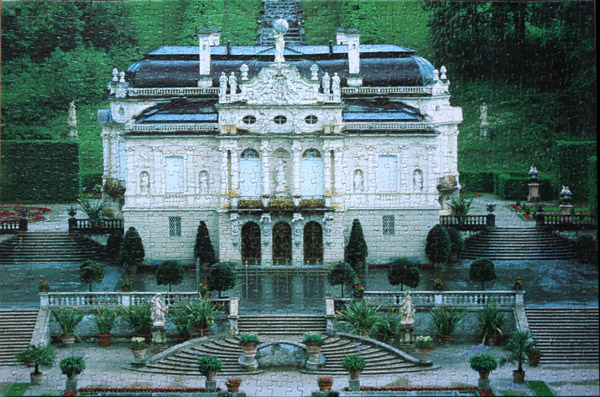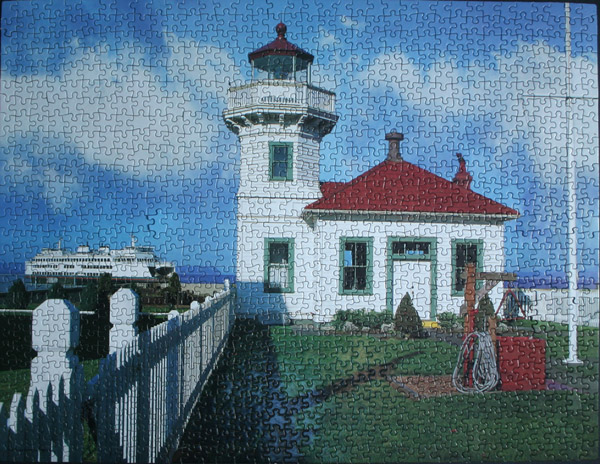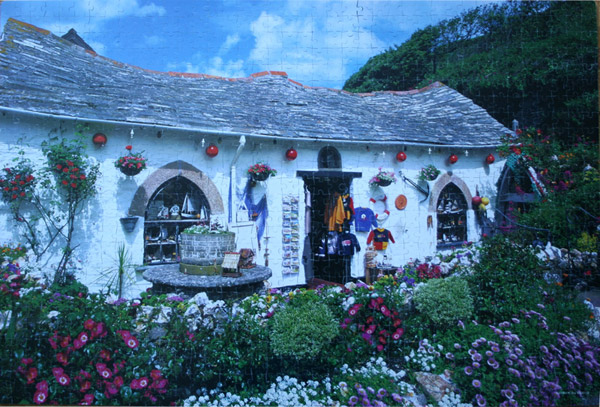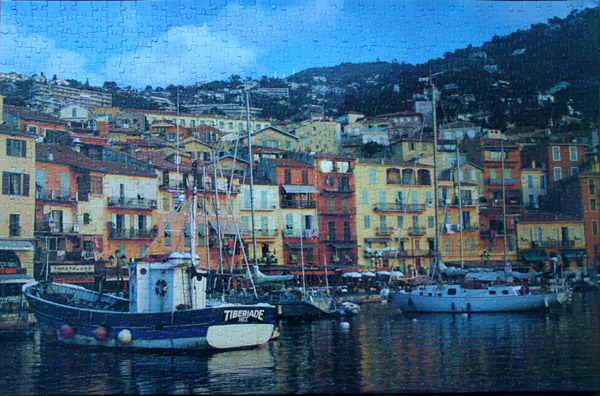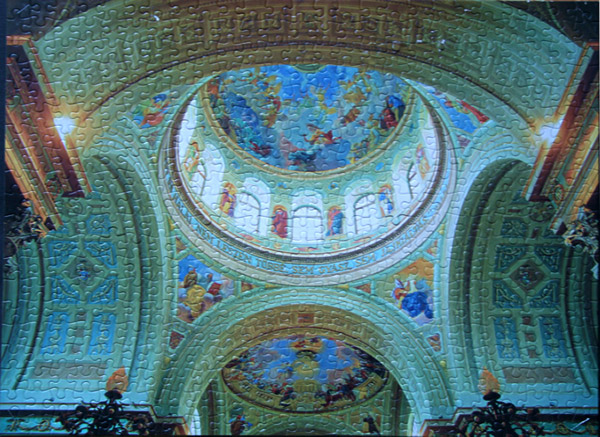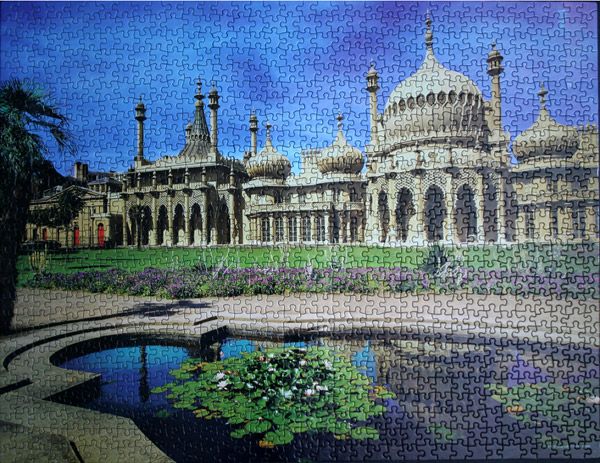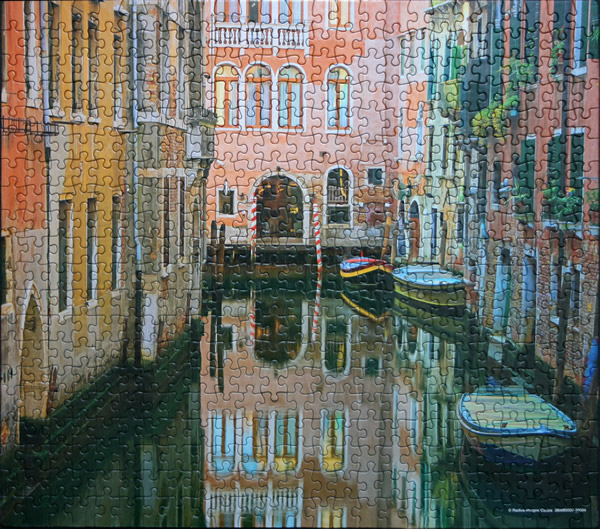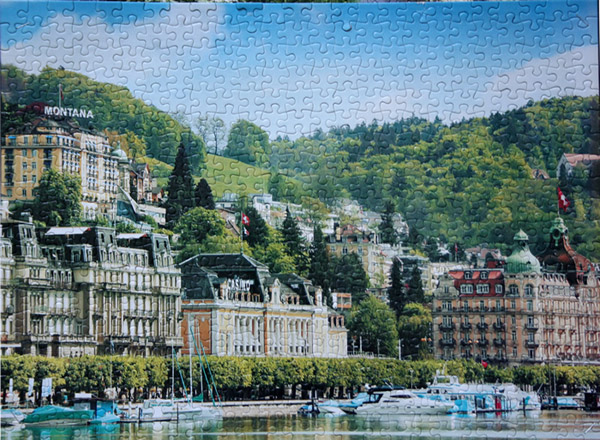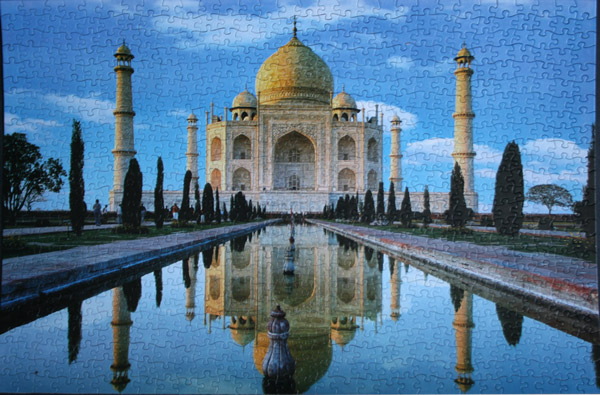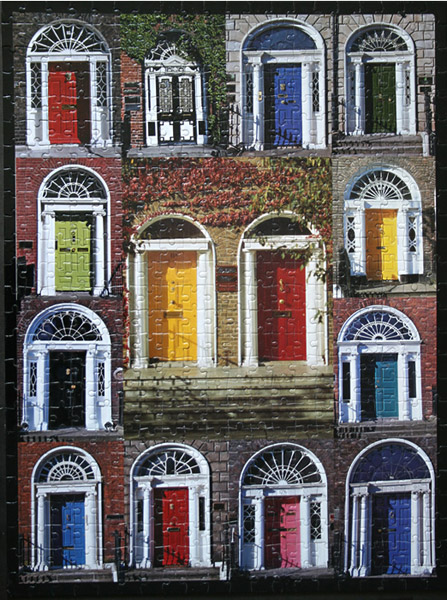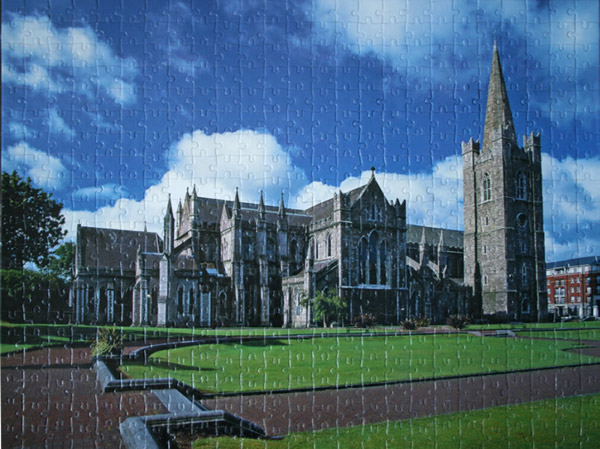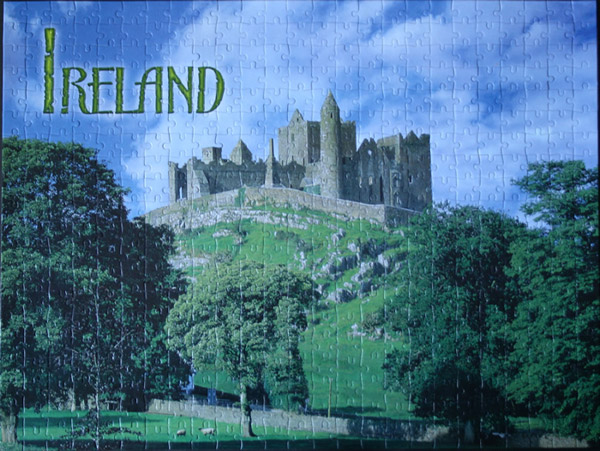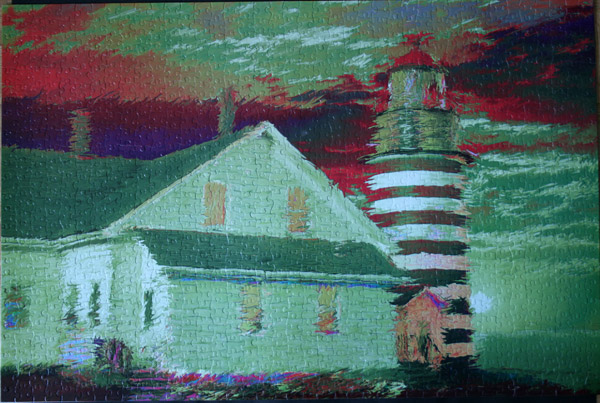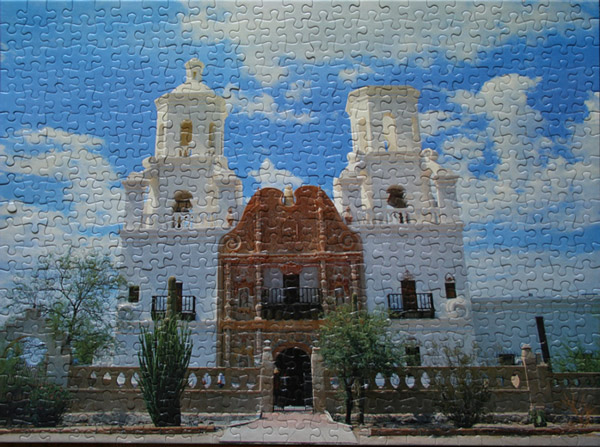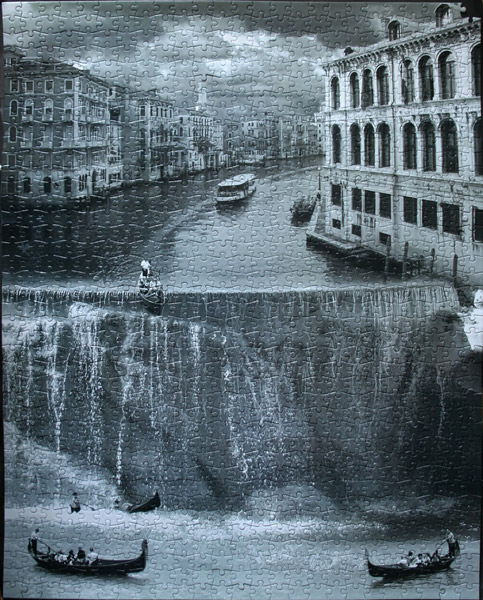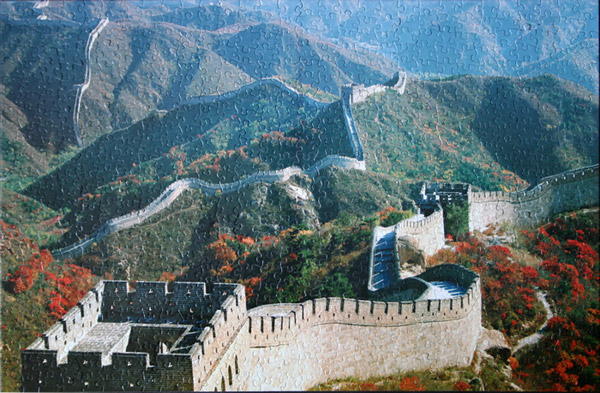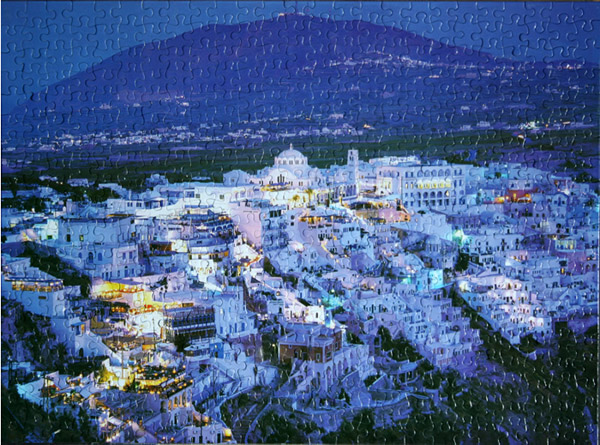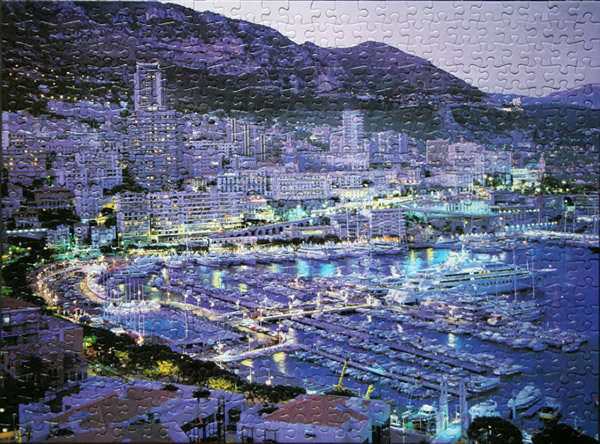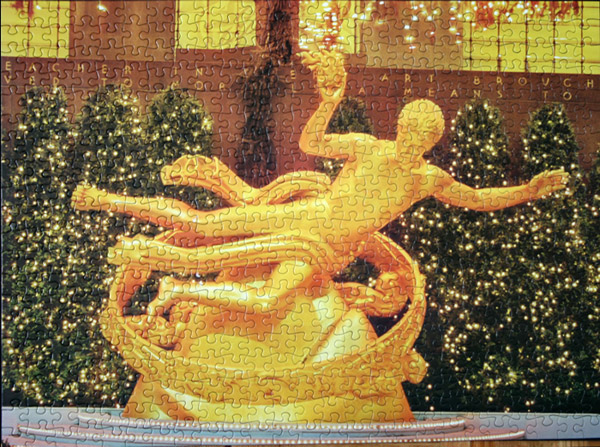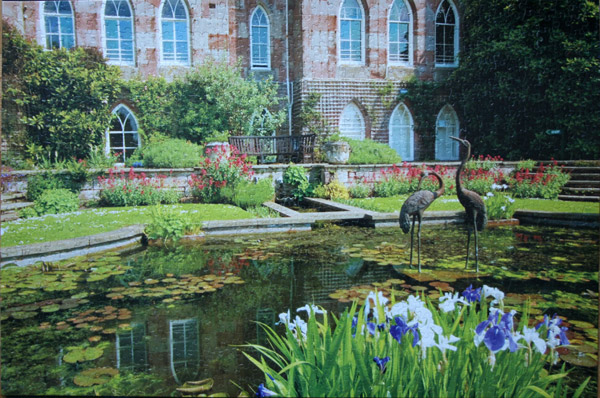
Size: 1000 pieces
Dimensions: 73cm x 48.5cm
Producer: Sure-Lox, The Canadian Group
Notes: Cholmondeley Castle is a country house in the civil parish of Cholmondeley, Cheshire, England. It is surrounded by a 7,500 acres estate.
In the 18th century Hugh Cholmondeley, 1st Earl of Cholmondeley had created gardens around the house, both kitchen gardens and orchards to provide food for the household, and also pleasure gardens. The pleasure gardens would have been formal in style as they were laid out by George London. The ironworker Jean Tijou produced an iron entrance gate to the gardens, but this was moved to Houghton Hall in Norfolk by the 4th Earl. John van Nost designed a fountain for the garden. The garden also contained a bowling green and an aviary. The 4th Earl brought in William Emes to redesign the garden who, according to the fashion of the day, buried London’s work under a landscape park. [Wiki]






